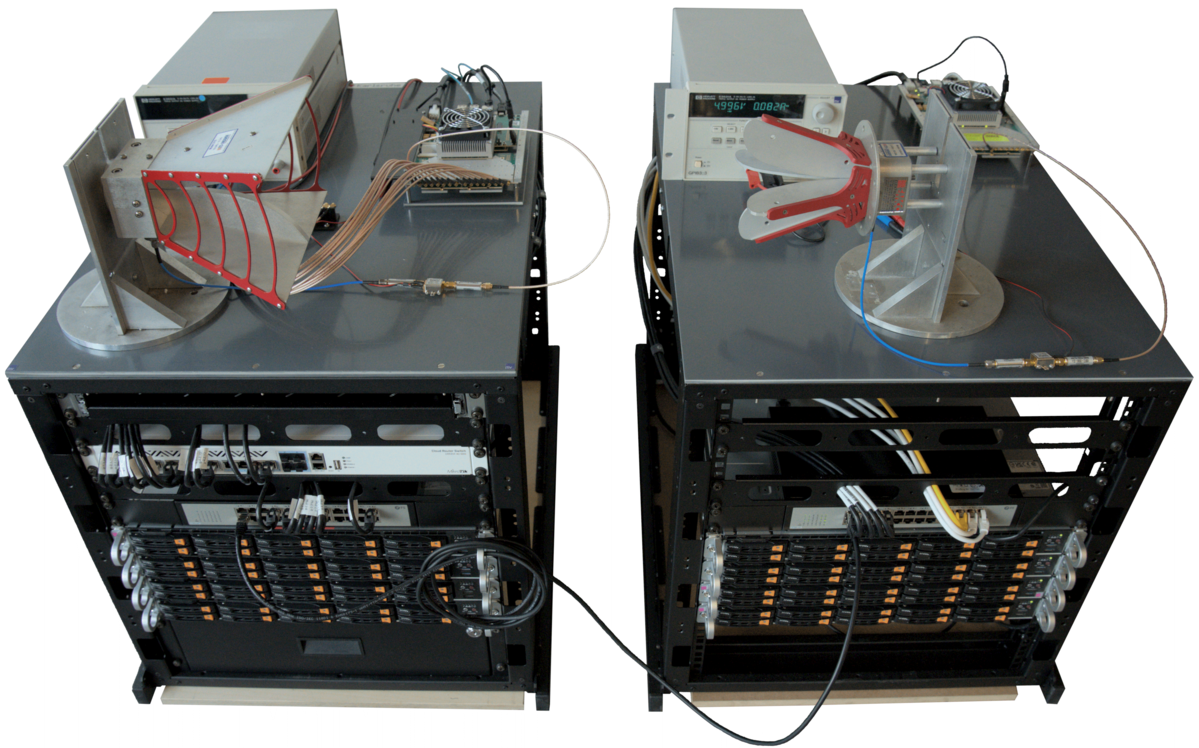Open6GHub - 6G für Mensch, Umwelt & Gesellschaft
- Funding:
Bundesministerium für Bildung und Forschung (BMBF)
- Project partner:
Deutsches Forschungszentrum für Künstliche Intelligenz GmbH
Friedrich-Alexander-Universität Erlangen-Nürnberg
Fraunhofer FOKUS
Fraunhofer IAF
Fraunhofer SIT
IHP - Leibniz-Institut für innovative Mikroelektronik
Hasso-Plattner-Institut Potsdam
RWTH Aachen
Technische Universität Berlin
Technische Universität Darmstadt
Technische Universität Ilmenau
Technische Universität Kaiserslautern
Universität Bremen
Universität Duisburg-Essen
Albert-Ludwigs-Universität Freiburg
Universität Stuttgart
- Start:
August 2021
- End:
December 2025
- Contact:
Open6GHub Germany
Reliable and powerful communication networks are of great importance for the increasingly digital economy and society. In the Open6GHub project, 17 partners, including the Karlsruhe Institute of Technology (KIT), are working on the development and implementation of intelligent communication networks and the next mobile communications generation 6G. The German Federal Ministry of Education and Research (BMBF) is funding the project with nearly 67 million euros.

In the Open6GHub, the project partners are initially looking at application scenarios in the networked factory, in rural areas and in agriculture. This is because 6G is intended to serve as the infrastructure for future mobile and highly secure applications based on artificial intelligence (AI) and machine learning. "At KIT, one of the things we are researching in the project is mobile access points in the terahertz range with direct fiber-optic connectivity, for example for applications in modern manufacturing environments," says KIT project leader Thomas Zwick of the Institute of Radio Frequency Engineering and Electronics (IHE). "In addition, we are setting up our own testbed – i.e., an experimental field – at 26 GHz to be able to investigate the connection of radio communication and sensor technology."
At the same time, the scientists are looking at other THz systems, new software and programming concepts for 6G mobile networks, and the reliability, safety, and exposure of future radio systems. KIT is participating in the Open6GHub with a total of ten research groups and is funded with 12 million euros, of which 4.37 million euros for the IHE.
Follow the Open6GHub also on:
Instagram
Facebook
Twitter
Youtube
LinkedIn
Publications
Journal
- L. Valenziano, J. Hebeler, A. Sherifaj, F. Thome, C. Koos, C., T. Zwick and A. Bhutani, „A comprehensive packaging solution from DC to 113 GHz for InGaAs amplifiers,“ Electronics Letters, Vol. 60, Issue 6, March 2024, https://doi.org/10.1049/ell2.13143. [Available Online]
- M. Pittermann, T. Zwick and A. Bhutani, „A 53–125 GHz chip to double-ridge rectangular waveguide transition,“ Electronics Letters, Vol. 60, Issue 6, March 2024 https://doi.org/10.1049/ell2.13153. [Available Online]
- A. Bhutani, M. Kretschmann, J. Dittmer, P. Lu, A. Stöhr and T. Zwick, „A 220 GHz to 325 GHz Grounded Coplanar Waveguide Based Periodic Leaky-Wave Beam-Steering Antenna in Indium Phosphide Process,“ Electronics 2023, 12, 3482. https://doi.org/10.3390/electronics12163482. [Available Online]
Conference Proceeding
- E. Bekker, A. Quint, G. Gramlich, L. Valenziano, T. Zwick and A. Bhutani, "110 to 170 GHz High-Gain Antenna with Embedded Surface Mount Short Horn and Baseband PCB Horn Antenna," 2024 18th European Conference on Antennas and Propagation (EuCAP), Glasgow, United Kingdom, 2024, pp. 01-05, doi: 10.23919/EuCAP60739.2024.10501187. [Available Online]
- B. Nuss, P. Groeschel, J. Pfau, J. Becker, M. Vossiek and T. Zwick, "Broadband MIMO Testbed for the Development and Research on 6G," European Wireless 2022; 27th European Wireless Conference, Dresden, Germany, 2022, pp. 1-3. [Available Online]

